
Layering Rugs in the Bedroom: Tips and Tricks
Layering rugs in the bedroom isn't just about adding layers; it's about creating depth, warmth, and a sense of cosiness underfoot. It allows for an unparalleled expression of personal style, enabling the interplay of diverse rug designs that can transform a room from mundane to magazine-worthy. Beyond the visual enhancement, this approach offers a practical solution to various design challenges, such as unifying disparate elements, defining spaces within larger rooms, and even concealing imperfections in flooring.
As we delve into the tips and tricks of successfully layering rugs in the bedroom, we'll explore how to choose complementary rugs, effective layering techniques, and the best practices for maintaining the beauty and longevity of your rugs. Whether you're looking to refresh your bedroom's decor or embark on a complete design overhaul, mastering the art of rug layering will equip you with the skills to elevate your personal space to new heights of sophistication and comfort.
The Art of Layering Rugs
The concept of layering rugs is more than mere decoration; it's an art form that infuses depth, texture, and personality into the bedroom. This chapter will guide you through the foundational aspects of rug layering, helping you understand its significance in interior design and how it can dramatically alter the ambiance of your bedroom.

Understanding Rug Layering
At its core, rug layering involves placing one rug on top of another, but the technique is far from simplistic. It's a deliberate design choice that adds dimension to a room, enabling textures and patterns to connect harmoniously. When executed thoughtfully, layered rugs can anchor furniture, delineate spaces within the bedroom, and create a plush surface that beckons bare feet.
Significance in Contemporary Interior Design
In contemporary interior design, layering rugs is celebrated for its versatility and ability to adapt to various styles, from minimalist to bohemian. It offers a creative solution to the bedroom's design challenges, allowing for flexibility in changing themes without the commitment of wall-to-wall carpeting. Moreover, it reflects a personalised approach to decorating, in which each layer tells a part of the room's story.
Visual Depth and Texture
One of the most compelling reasons to layer rugs is the visual depth and texture it introduces. By combining rugs with different pile heights and materials, you can achieve a tactile and visual richness that single rugs often cannot provide. This depth enhances the bedroom's overall aesthetic, making it feel more inviting and lived-in.

Warmth and Comfort
Beyond aesthetics, the practical benefits of rug layering are undeniable. Additional layers mean extra insulation, keeping your feet warm and cosy, especially during the colder months. This added comfort transforms the bedroom into a snug haven, perfect for unwinding after a long day.
A Canvas for Personal Expression
Layering rugs in the bedroom opens up endless possibilities for personal expression. Through the choice of colours, patterns, and textures, you can showcase your unique style and preferences. Whether you favour bold, vibrant designs or subtle, understated elegance, rug layering allows you to experiment and evolve your bedroom's decor over time.
In the following sections, we'll delve into how to select the perfect rugs for layering, practical tips for achieving a harmonious look, and the best practices for maintaining your layered rugs. With these insights, you'll be well-equipped to transform your bedroom into a beautifully layered masterpiece that reflects your personal taste and lifestyle.
Benefits of Layering Rugs in the Bedroom
Layering rugs in the bedroom isn't just a stylistic choice—it's a strategy that brings a multitude of benefits, enhancing both the form and function of the space. From elevating the room's aesthetic to offering practical solutions for comfort and space definition, the advantages of this design approach are manifold. Let's explore the key benefits that make rug layering an appealing option for bedrooms.

Enhanced Comfort sand Warmth
One of the most immediate benefits of layering rugs is the added comfort and warmth it brings to a bedroom. Especially in cooler climates, the extra layers serve as insulation, keeping your feet warm and adding a plush, cosy feel to the room. This is particularly beneficial in bedrooms with hard flooring, where a single rug might not provide sufficient warmth.
Increased Versatility in Design
Layering rugs offers unparalleled versatility in interior design. By mixing and matching different rugs, you can easily refresh the look of your bedroom without the need for significant renovations or furniture changes. This flexibility allows you to experiment with trends, introduce seasonal variations, or simply change the room's ambiance according to your mood.
Opportunity for Personalisation and Creativity
With the vast array of rug designs available, layering provides an excellent opportunity for personal expression. Whether you're drawn to bold patterns, vibrant colours, or subtle textures, combining different rugs allows you to create a space that truly reflects your personal style. This creative freedom enables you to craft a bedroom environment that resonates with your aesthetic preferences and lifestyle.
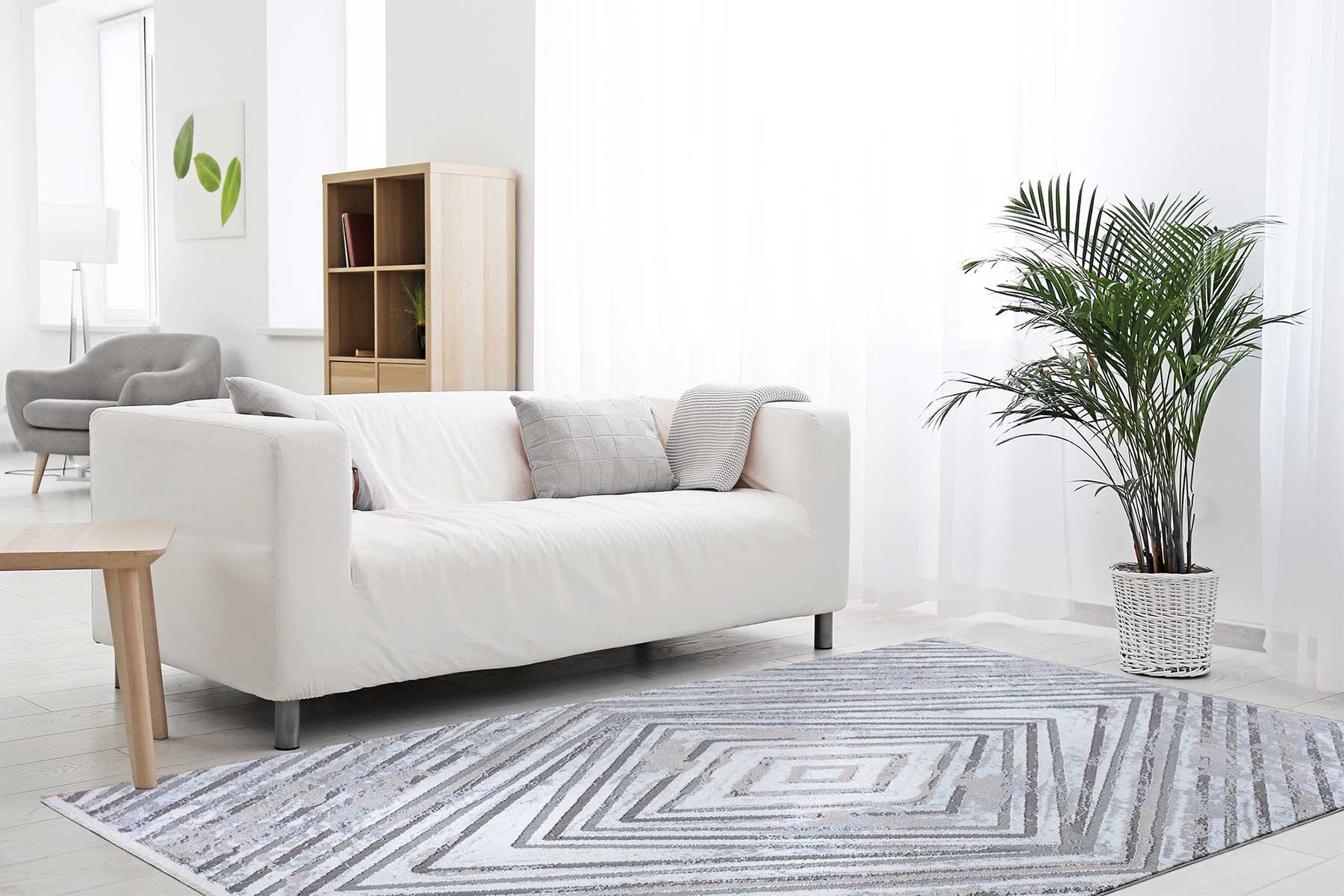
Improved Room Dynamics and Space Definition
In larger bedrooms or open-plan spaces, layered rugs can help define different areas, such as a reading nook or a dressing area, without the need for physical partitions. This can improve the room's dynamics, making it feel more organised and purposeful. Additionally, the strategic placement of rugs can help anchor furniture, creating a cohesive look that ties the entire room together.
Concealing Imperfections
Layering rugs can also serve a practical purpose in concealing imperfections in flooring, whether it's hiding stains, scratches, or uneven surfaces. This is a cost-effective solution that can extend the life of your existing flooring while adding style and character to the room.
Sound Insulation
Another often overlooked benefit is the sound insulation provided by multiple layers of rugs. In multi-storey homes or apartments, layered rugs can help dampen noise, contributing to a quieter, more serene bedroom environment. This is particularly beneficial for light sleepers or those living in busy urban areas.

In summary, the benefits of layering rugs in the bedroom extend far beyond aesthetics. From enhancing comfort and warmth to offering creative freedom and practical solutions for space definition and sound insulation, the strategic use of layered rugs can transform your bedroom into a more inviting, personalised, and functional space.
also check out our collection of bedroom rugs for reference.
Choosing the Right Rugs for Layering
Selecting the perfect rugs for layering in your bedroom involves more than just picking out designs you like. It's about creating a harmonious blend of textures, colours, and patterns that complement each other and the overall design of your room. This chapter will guide you through the considerations and tips for choosing rugs that not only look great together but also enhance the functionality and comfort of your bedroom.
Understanding Scale and Proportion
The first step in successful rug layering is understanding the importance of scale and proportion. The base rug should be large enough to anchor the space, typically extending beyond the area of the bed or seating area it underpins. The top layer can be smaller, adding visual interest without overwhelming the space. A common approach is to allow the bottom rug to peek out around the edges of the top rug, creating a framed effect that adds depth to the room.
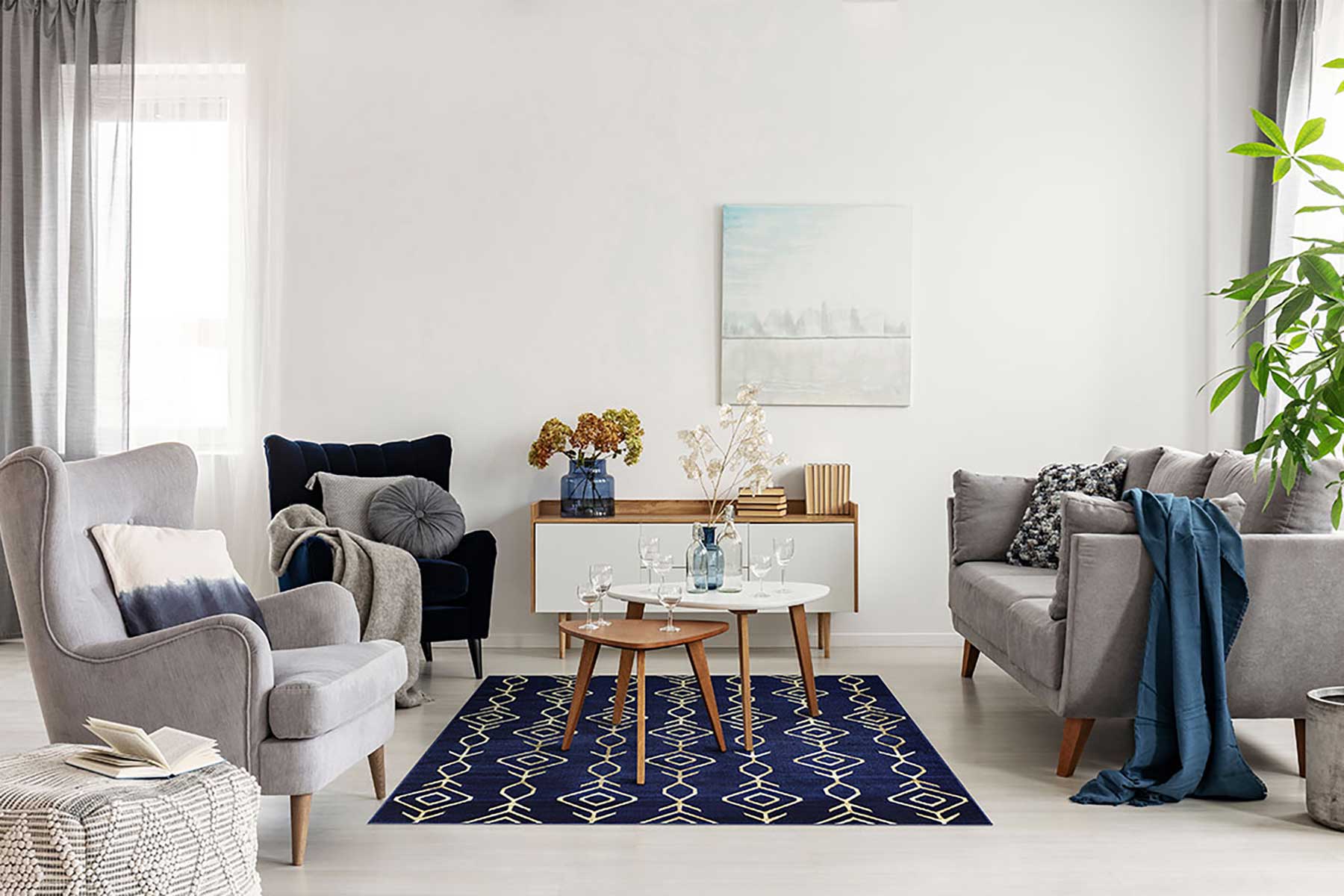
Mixing Textures
One of the joys of layering rugs is the opportunity to play with different textures. Combining a variety of textures can add a tactile dimension to your bedroom, making it feel more inviting. For instance, pairing a soft, plush rug atop a flat-weave or jute rug creates a contrast that is both visually appealing and pleasant underfoot. However, it's important to ensure the textures are complementary and not too jarring when juxtaposed.
Colour Coordination
Colour plays a crucial role in layering rugs. You can opt for rugs in similar hues for a cohesive look or choose contrasting colours for a bold statement. If you're layering patterns, a safe approach is to keep one rug in neutral tones to balance the busyness of the other. Remember, the goal is to enhance the room's colour scheme, not to compete with it.
if you're having problems with colour coordination, check out our complete guide on how to choose the right rug colour and let us help with the colour coordination.
Pattern Play
Layering rugs offers a fantastic opportunity to mix patterns, but it requires a thoughtful approach to avoid a cluttered look. When combining patterns, vary their scale – pair a large, bold pattern with a smaller, more subdued one. This prevents any single pattern from dominating the space. Additionally, having a common colour between the patterns can help tie them together seamlessly.
Material Matters
The durability and maintenance of the rugs are as important as their aesthetics, especially in a bedroom, which is a high-traffic area. Natural fibres like wool are durable and easy to clean, making them suitable for the bottom layer. Synthetic rugs might be more affordable and offer a wider range of patterns, suitable for the top layer where direct foot traffic is less.
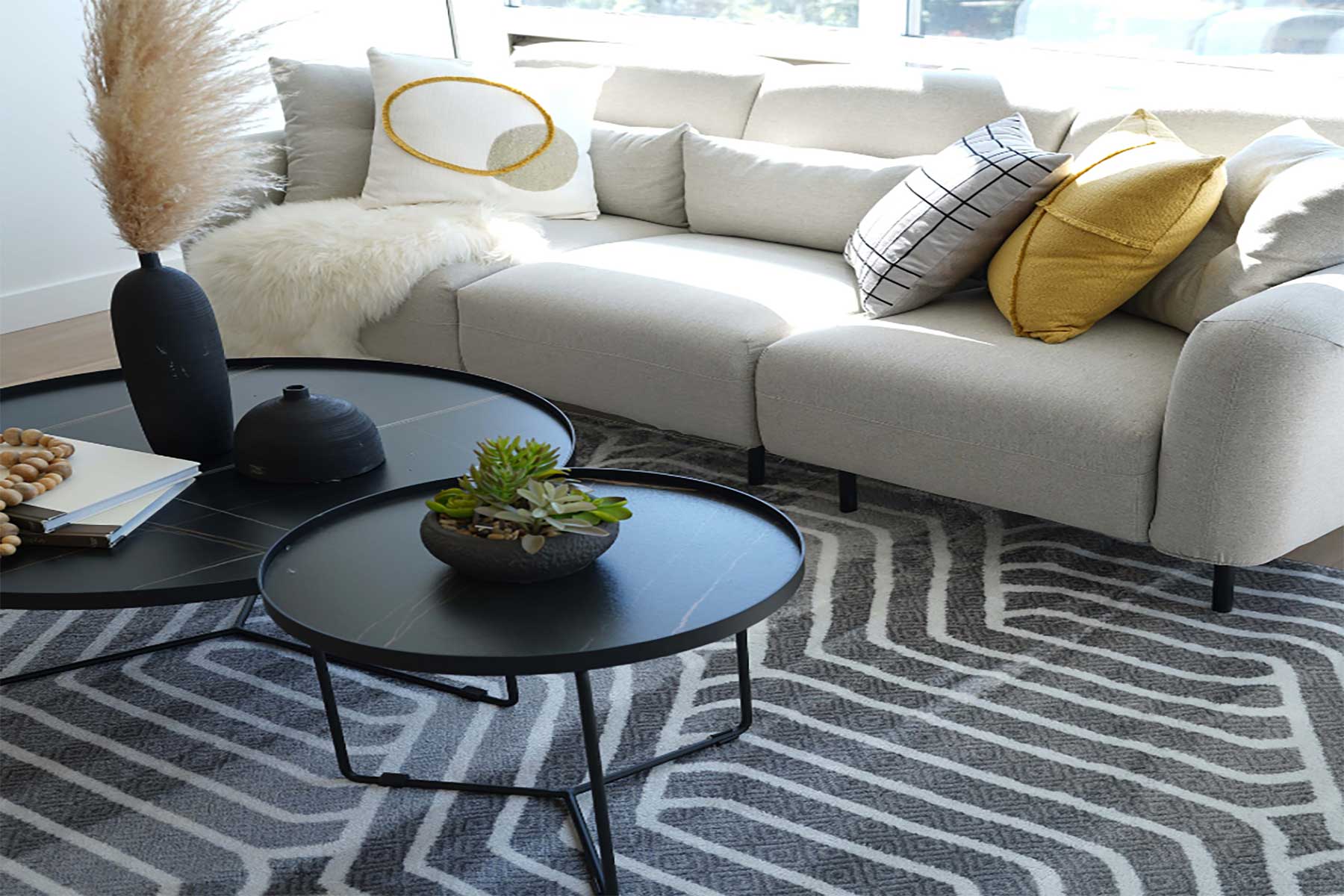
Consider the Room's Overall Design
Finally, the rugs you choose should complement the bedroom's overall design theme. Whether your room has a minimalist, bohemian, or traditional decor, the layered rugs should enhance the existing aesthetic, not detract from it. This doesn't mean everything has to match perfectly, but there should be a sense of harmony in the design elements.
Layering Techniques and Layouts
After selecting the perfect rugs for your bedroom, the next step is to master the art of layering them effectively. This chapter delves into various techniques and layouts that can help you achieve a harmonious and stylish look, ensuring your layered rugs enhance the room's aesthetics and functionality.
Basic Layering Techniques
-
Offset Placement:
This technique involves placing the top rug at an angle or slightly off-centre over the base rug. It's ideal for creating a casual, relaxed look and works well with rugs of different shapes and sizes. -
Full Coverage Layering:
For a more cohesive and unified appearance, consider covering almost the entire surface of the bottom rug with the top rug, leaving only a narrow border exposed. This approach is particularly effective in large bedrooms, helping to define the sleeping area or seating space. -
Mixing Shapes:
Don't be afraid to mix rugs of different shapes. A rectangular base rug layered with a round or oval top rug can add an element of surprise and break the monotony of straight lines in the bedroom furniture.
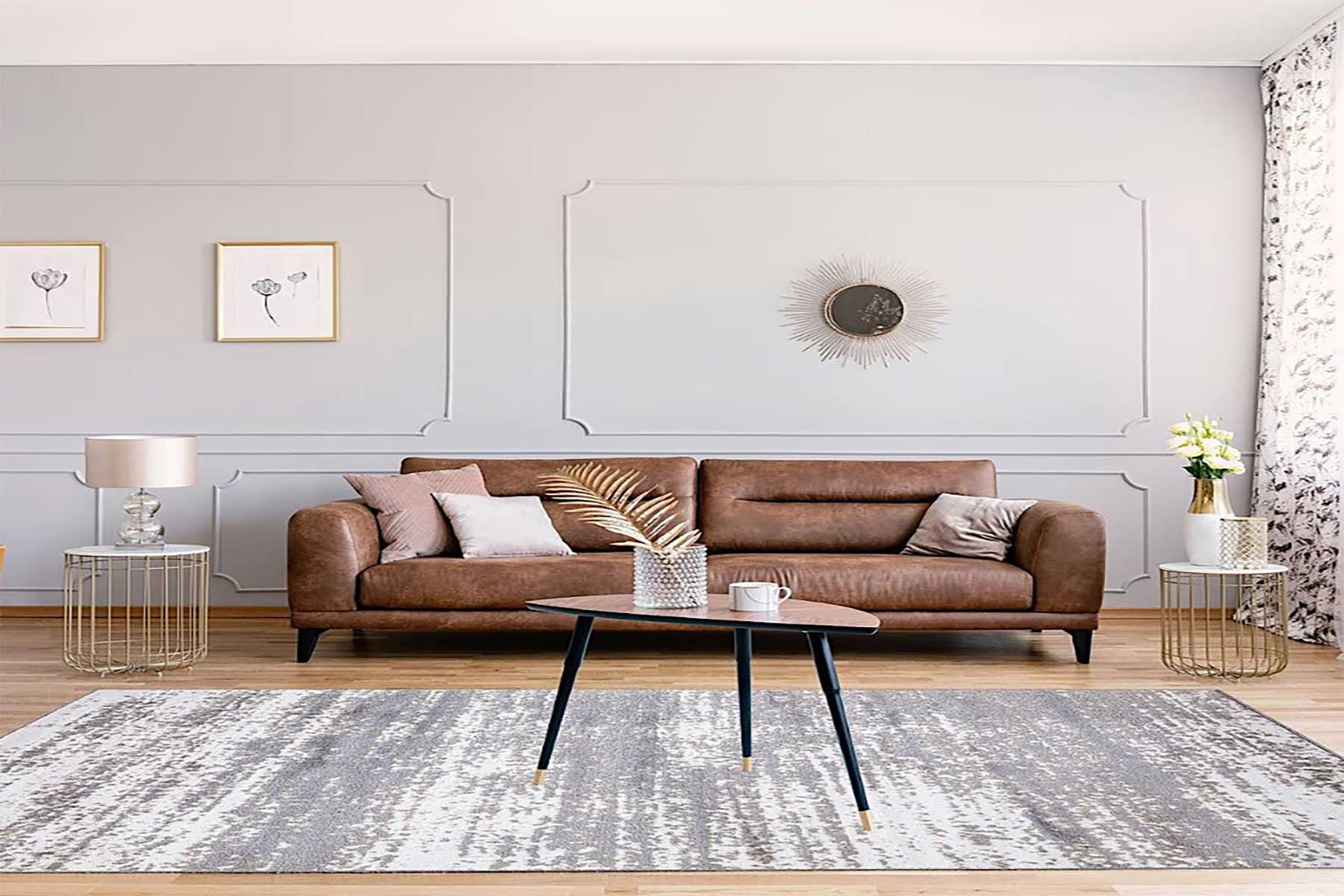
Advanced Layering Ideas
-
Textural Contrast:
Use layering as an opportunity to play with textures. A high-pile rug over a low-pile or flat-weave rug can add depth and interest. This contrast in textures can also enhance the sensory experience underfoot. -
Pattern Mixing:
Combining patterns requires a careful balance to avoid overwhelming the space. Try layering a bold, graphic pattern with a more subdued, abstract one, ensuring they share a common colour palette to maintain visual coherence. -
Colour Blocking:
For a modern and bold statement, use rugs in solid colours to create a colour-blocking effect. This can be an effective way to introduce vibrant colours into the bedroom without committing to a single, large piece.
Layout Considerations
-
Bed Placement:
In a bedroom, the most common focal point for rug layering is around the bed. Consider extending the bottom rug beyond the bed's perimeter to create a soft, warm border that invites you to step on it when you get out of bed. -
Furniture Arrangement:
Rugs can help define the arrangement of furniture, especially in larger bedrooms with separate seating areas. Use layered rugs to delineate these spaces, ensuring that at least the front legs of chairs or sofas rest on the rug to tie the space together. -
Walking Paths:
Be mindful of the room's traffic patterns. Layered rugs should not obstruct doorways or create tripping hazards. Ensure the edges of the rugs are secure and flat against the floor.

Rug Maintenance and Care
Maintaining and caring for your layered rugs is crucial to preserving their beauty and extending their lifespan. Proper maintenance not only keeps the rugs looking their best but also ensures they continue to provide comfort and warmth in your bedroom. This chapter will cover the best practices for cleaning and maintaining layered rugs, addressing common concerns and providing tips to keep your rugs in top condition.
Routine Maintenance
- Regular Vacuuming:
Frequent vacuuming is the first line of defence against dirt and dust accumulation. For layered rugs, vacuum the top layer regularly and lift it to vacuum the bottom rug periodically. Be gentle with high-pile and delicate rugs to avoid damaging the fibres. - Spot Cleaning Spills:
Accidents happen, and prompt action is key to preventing stains. Blot spills immediately with a clean, dry cloth, avoiding rubbing, which can spread the stain or damage the rug's fibres. Use a mild detergent solution for tougher stains, testing it on a small, inconspicuous area first. - Rotation:
To ensure even wear, rotate your rugs every six months, especially if they are exposed to direct sunlight or heavy foot traffic. This practice helps maintain the rugs' appearance and prevents uneven fading.
Deep Cleaning
- Professional Cleaning:
Depending on the material and the manufacturer's recommendations, professional cleaning every 12 to 18 months can rejuvenate your rugs. Professionals have the tools and expertise to deep clean without damaging the fibres, which is particularly important for the bottom rug that may absorb more dust and debris. - DIY Methods:
For less delicate rugs, DIY steam cleaning or shampooing can be effective. Ensure the rug is thoroughly dry before relayering to prevent mould and mildew growth. Always follow the care instructions provided by the rug manufacturer to avoid damage.
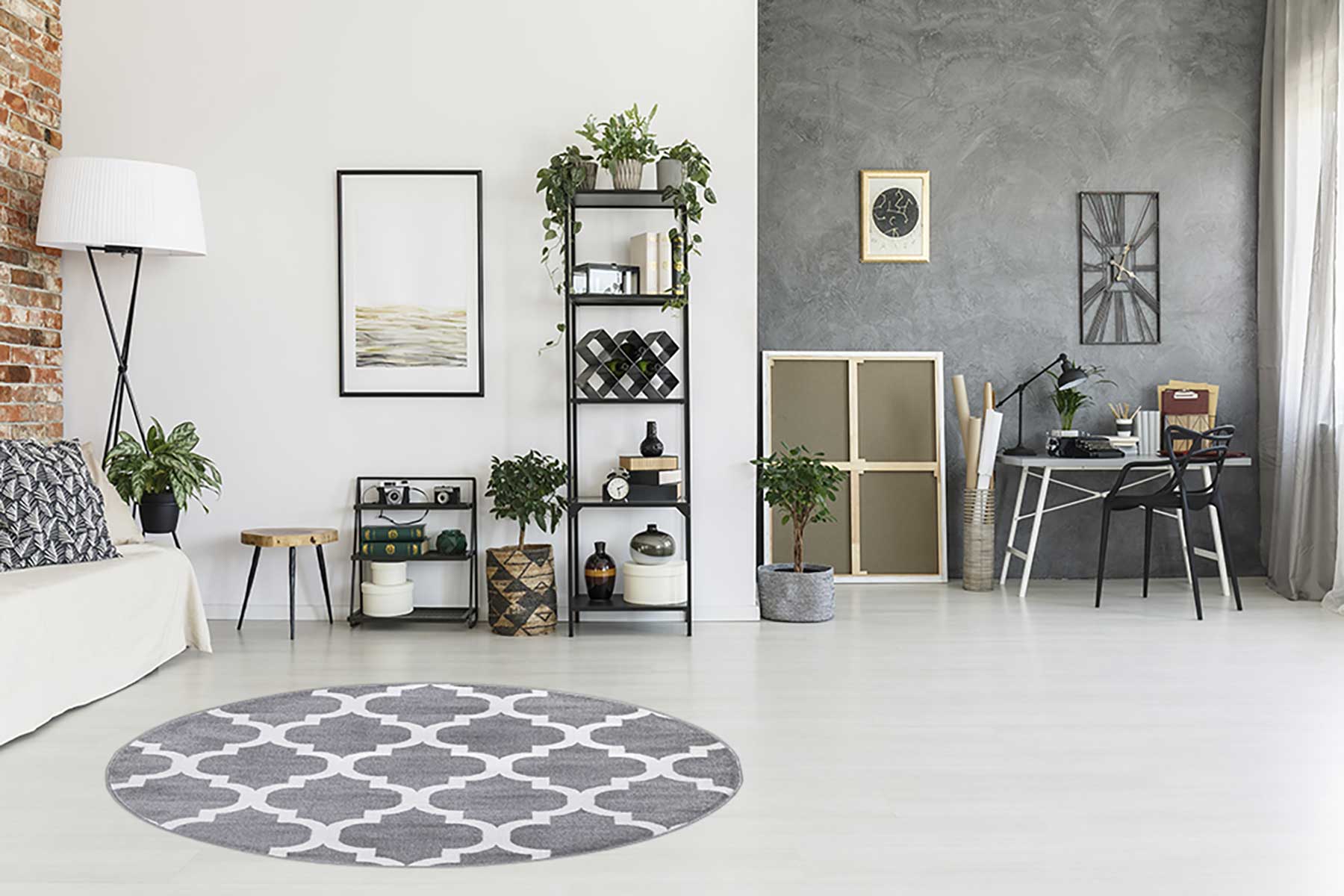
Special Considerations for Layered Rugs
- Avoid Moisture Traps:
When layering rugs, be mindful of moisture becoming trapped between the layers, which can lead to mould and mildew. Ensure the room is well-ventilated, and consider using rug pads that allow for airflow. - Addressing Slippage:
To prevent the top rug from slipping, use a non-slip pad or rug tape designed for layered rugs. This not only ensures safety but also helps keep the rugs aligned. - Repair and Restoration:
Keep an eye out for signs of wear or damage, such as fraying edges or loose threads. Early intervention can prevent further deterioration. For valuable or antique rugs, consult a restoration specialist to address any issues.
if you're facing specific problems while washing your rugs, check out our complete guide on how to wash any and all types of rugs for more information.
Role of Rugs in Contemporary Interior Design
Rugs play a pivotal role in contemporary interior design, serving not just as floor coverings but as key elements that tie a room's aesthetic together. In the bedroom, especially, where comfort and personal expression are paramount, the strategic use of layered rugs can elevate the space from merely functional to truly exceptional. This chapter explores the significance of rugs in modern design and offers inspiration for incorporating layered rugs into your bedroom for a fresh, updated look.
Enhancing Aesthetics with Rugs
- Visual Interest and Texture:
Rugs, particularly when layered, add depth and texture to a bedroom, making the space more visually appealing. The interplay of different materials and patterns can inject personality into the room, reflecting the inhabitants' style and preferences. - Colour and Pattern:
With the vast array of rug designs available today, rugs offer an easy way to introduce colour and pattern into a bedroom. Layered rugs can be particularly effective in this regard, allowing for bold statements or subtle accents that can be changed with the seasons or as tastes evolve. - Defining Spaces:
In larger bedrooms or open-plan spaces, rugs can help delineate different areas, such as a sleeping zone and a sitting area. Layering rugs can enhance this effect, creating clear visual boundaries that organise the space without the need for physical dividers.
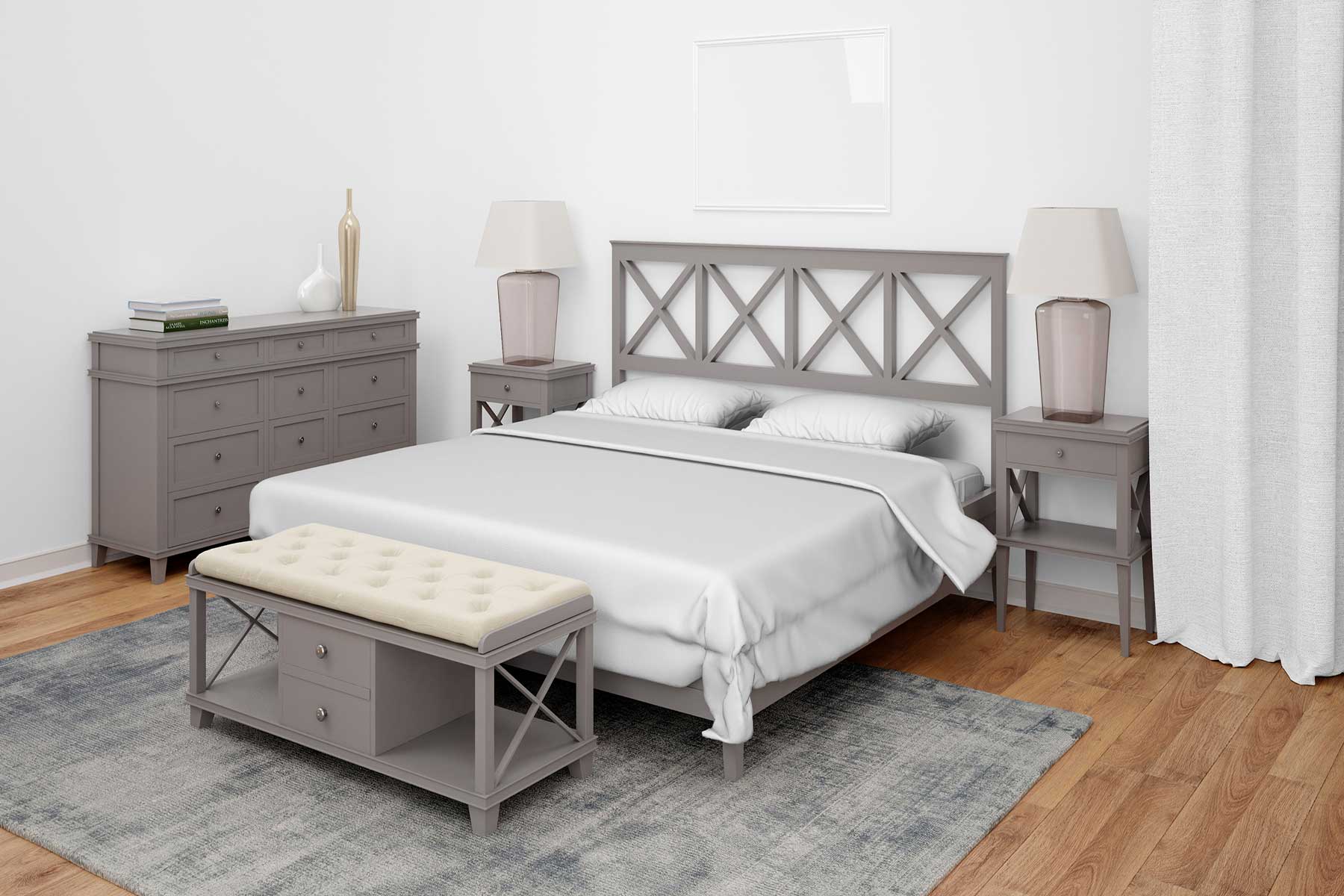
Practical Benefits in Modern Design
- Comfort and Warmth:
Beyond their aesthetic appeal, rugs contribute to the physical comfort of a bedroom. Layered rugs offer additional insulation and softness underfoot, a welcome feature in any sleeping area. - Sound Dampening:
In today's homes, where hard flooring is prevalent, rugs serve the practical purpose of dampening sound, contributing to a quieter, more serene bedroom environment. This is particularly beneficial in flats or multi-storey houses where noise can easily travel. - Flexibility and Adaptability:
The use of rugs, and especially the technique of layering them, provides flexibility in interior design. Rugs can be easily swapped out or rearranged, allowing the room's decor to evolve without significant investment or effort.
Incorporating Layered Rugs into Your Bedroom
- Start with a Solid Foundation:
Choose a large, neutral rug as the base layer to anchor the space. This rug should be durable and easy to maintain, as it will bear the brunt of foot traffic. - Add Personality with the Top Layer:
Use the second rug to introduce colour, pattern, or texture. This layer can be more decorative and is an excellent opportunity to showcase your personal style. - Consider the Seasons:
Swap out the top layer of rugs according to the season for a quick and easy decor refresh. Lighter, brighter rugs can invigorate the space in spring and summer, while richer, deeper tones can add warmth in autumn and winter.
Having covered the essentials of rug layering in the bedroom, from selection and styling to maintenance and the broader role of rugs in interior design, we've provided a comprehensive guide to enhancing your space with this dynamic decor strategy. As there isn't a specific "next one" outlined, let's conclude our guide with a final word that encapsulates the guide's spirit and offers encouragement for personal experimentation and design exploration.
Final Word: Embracing Creativity with Layered Rugs
Encouragement for Experimentation
The journey to mastering rug layering is one of experimentation and discovery. Don't shy away from trying different combinations, mixing patterns and textures, and playing with contrasts. Remember, the most captivating designs often come from a place of bold experimentation and a willingness to break the rules.
Continuous Design Evolution
Your bedroom's design doesn't have to be static. As your tastes evolve, so too can your space. Layered rugs offer the flexibility to refresh your decor with minimal effort, allowing your bedroom to grow and change with you. Seasonal updates, mood shifts, or a complete style overhaul can all be achieved with a few strategic rug swaps.
A Personal Touch
Ultimately, the goal of incorporating layered rugs into your bedroom is to create a space that feels authentically yours. Whether you gravitate towards serene, minimalist designs or eclectic, vibrant spaces, the layers you add should contribute to a bedroom that serves as a personal retreat, tailored to your preferences for comfort, style, and ambiance.
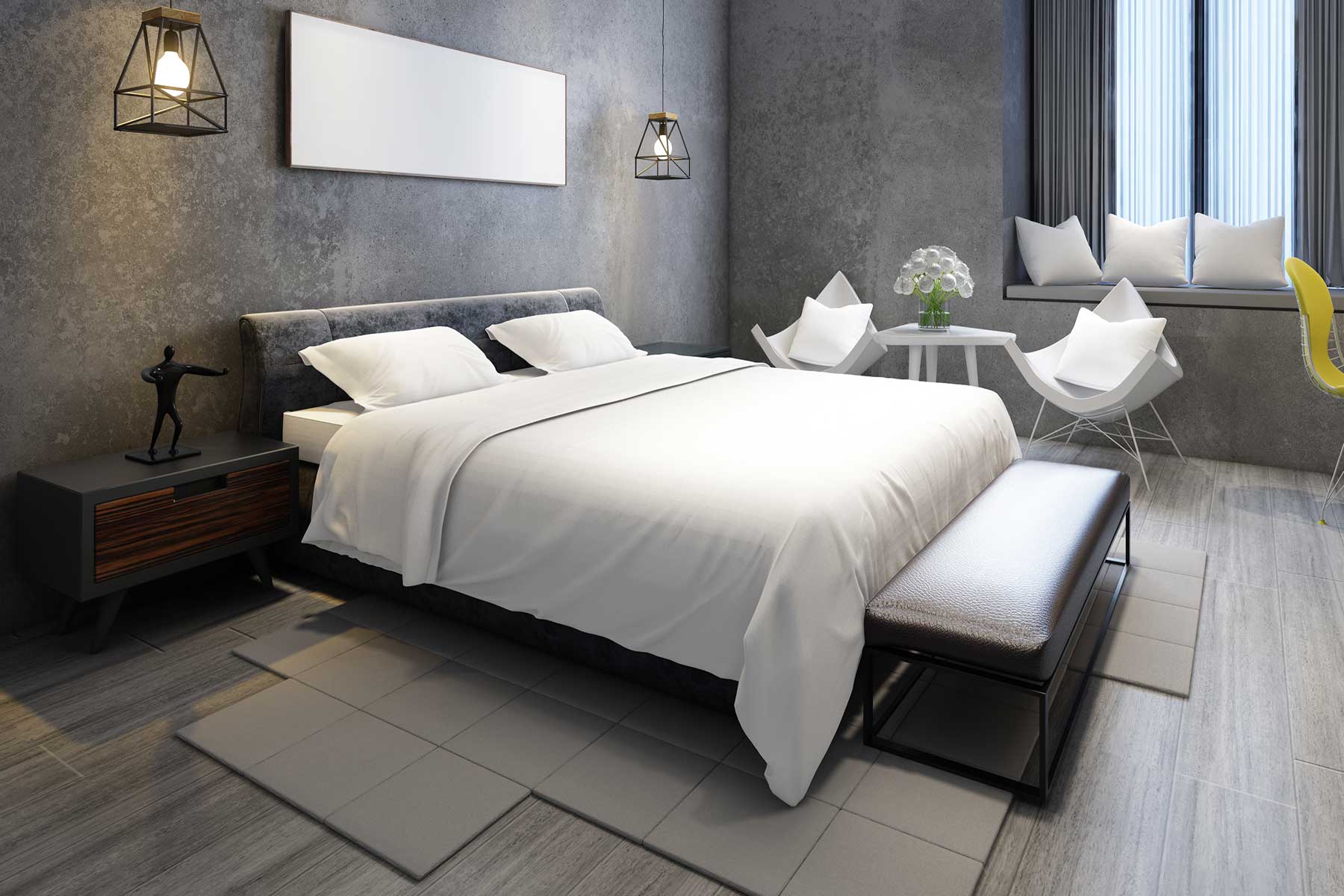
In Closing
We hope this guide inspires you to view your bedroom's floor as a canvas for expression, a foundation upon which to build a space that delights and comforts in equal measure. Layered rugs are but one tool in your design arsenal, yet their impact can be profound, transforming the ordinary into the extraordinary.
As you embark on your rug layering journey, remember that the most important guideline is your own sense of joy and satisfaction with the space you create. In the world of interior design, your personal happiness with the result is the true measure of success.
